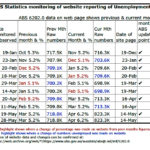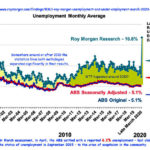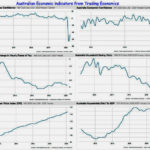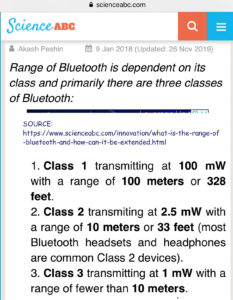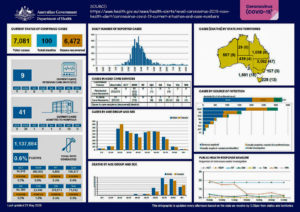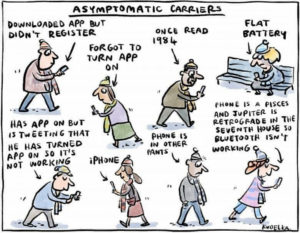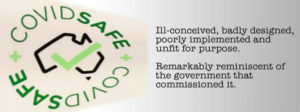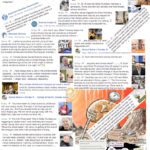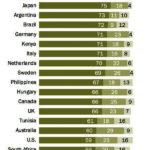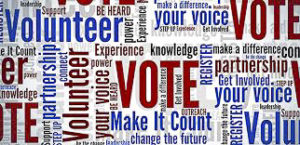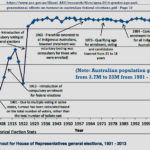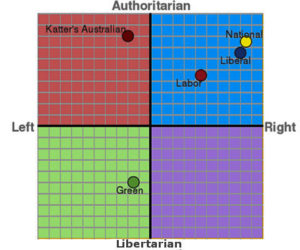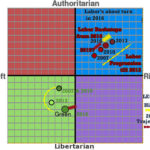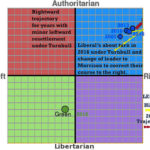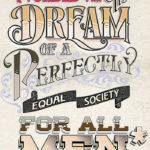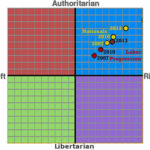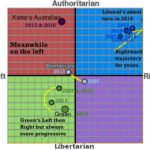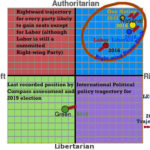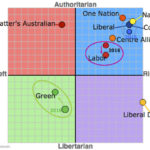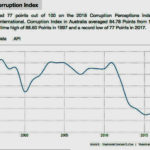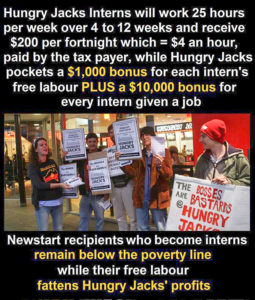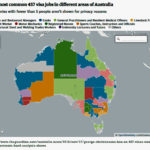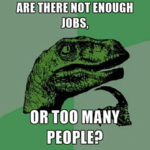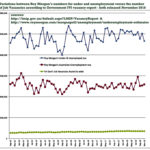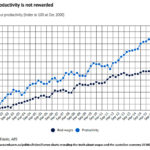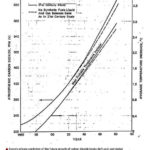Disparaging the unemployed youth as lazy pampered and opposed to hard work, is a conservative mantra. Conscripting youth into the army ( as Jacqui Lambie would have it) or off to rural farms to do hard graft, has been a talking point for years amongst conservatives.
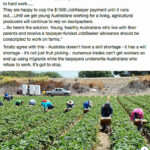
This opinion has been prevalent during the pandemic associated with mass disappearance of jobs. Senator Gerard Rennick & Colin Boyce MP have respectively expressed these views, in Facebook posts from 16th Aug & 6th Sept 2020.
Similar views are echoed in the Courier Mail articles they posted. “Unemployed youth should be conscripted” by Peter Gleeson and “Crops rot as lazy young Aussies snub lucrative hard work” by Michael Madigan. The first article discussed claims Unions are calling for an end to the working holiday Visa because of exploitation of backpackers on Farms.
Despite the hyperbole, unions were asking for a reformed Visa system, rather than terminating the Visa. This distinction was missed by Peter Gleeson who dismissed union concerns about exploitation with the phrase, “What bulldust“. However, other Murdoch news sources have acknowledged systemic abuse problems when promoting a documentary about Backpacker abuse. Sydney Criminal Lawyers have also documented visa abuse by farmers as has the ABC and business-oriented websites. So, sorry, Peter, these union claims are not “bulldust“. The federal ministers supporting these stories should know that because of their Federal paper on the subject “Labour exploitation and Australia’s visa framework“.

The second story by Michael Madigan implies typically extravagant wages of $3800 are being offered by farmers desperate to find workers. Both articles have exaggerated the earning capacity of a good fruit picker (although Peter’s article “modestly” claims that farmworkers can earn up to $1500 a week). According to Madigan’s article, Gavin Scurr managing director of Piñata Farms (a multi-million dollar business) said, “We recently paid a worker $3800 for a weeks work recently, and that is a top pick up working six days a week, probably around 10 hours a day,…”. Now on that basis, one might be forgiven for presuming that you can earn $63 an hour for picking strawberries. This assumption would reflect a misunderstanding of how much growers pay their workers. Despite both Michael & Peter’s claim that farmworkers can earn extravagant amounts of money, it is somewhat contrary to the Horticulture Industry Award of $19.49 for full-time or $24.36 an hour for casuals.
None of these articles mentions the practice of bonus payments paid on top, of a meagre base pay rate. Performance bonuses are only given to their top picker to encourage competition amongst the workers. Neither do these articles mention the standard rate paid, to everyone else who picks fruit. It is only about the total paid to a single worker who had – in the case of Piñata Farms – worked a sixty-hour week for a farmer who “turns over more than $50 million a year and employs 70 full-time staff and 300 seasonal workers.” Contrast this with the projected cash income for Australian farms of an “average $216,000 per farm in 2016–17, the highest recorded in the past 20 years.” cited by the Department of Agriculture.
At least Peter’s claim of $1500 a week is possible if – at $25/hr – the casual worker picks for 60 hours a week. However, maintaining that level of manual labour on a farm would be unsustainable. Which is presumably why Piñata Farms paid one of their workers who did precisely that, a huge bonus, as per Madigan’s article.
Is the picture of the real potential earning for casual farm worker, gaining any more clarity now?
Why is it a backpacker industry?
Lower rates of pay than are legislated, are typical as many citizen’s confirmed on Colin Boyce MP’s Facebook feed. So why do backpackers take on this work? To qualify for the second Working Holiday Visa (subclass 417) applicants have to finish three months (or 88 days to be exact) of regional farm work in the country. The Visa promotes specific jobs such as fruit picking and packing, trimming vines, fishing, working in tree farming, or working in mining. Backpackers put up with being paid under the award and overcharged for food and accommodation and even sexually exploited. With backpackers in short supply, our politicians are suggesting the use of the “many young, pampered Australians [who] have an aversion to hard work“.

Australian youth who are not seasoned backpackers, face relocation issues, such as the costs associated with travel, accommodation and feeding themselves while on a farm, which would diminish their earnings considerably. Although being accustomed to the poverty level of dole payments have presumably inured them to scrape by on very little. Current travel restrictions prevalent under pandemic conditions would limit Australian youth to work on farms only in their State. Is seeking minimum wages in an industry well known for underpayment, exploitation and poor working conditions the best we can do for our young Australians?

Senator Gerard Rennick echoing these sentiments elicited reaction to his post varying from gratuitous approval like, “Totally agree with this…” to criticism noting why relocation and picking work was fraught with problematic issues. These included the propensity for exploitation and anecdotal stories of the poor working conditions on farms.
Logistic Viability
Is farm work a viable option to occupy our “indolent” and unemployed youth, irrespective of possible low pay rates?
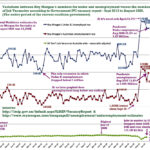
Total unemployment is massive under the pandemic. Historically, it has not dipped under a million workers since May 2012, and it did so, only for that month, according to Roy Morgan. For regular numbers below one million you have has to look back before September 2011. ABS only reports half the numbers of domestic unemployment because of their international methodology, which I have explained previously.
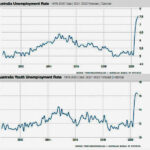
Youth unemployment (15-24 yrs) has had a long history of being more than twice as high percentage-wise as the national average, even by ABS’s low standards. Which in July 2020 measured 16.3% of the youth labour market (Table 13) or 345,900 people.
Youth Unemployment
So what are the job prospects for this mostly unskilled market of unemployed youth? Are there plenty of jobs in the market?

The Government publishes such data every month in the IVI job vacancy statistics. Under the classification of Labourers, there is a sub-classification for “Farm, Forestry and Garden” Workers. Early September’s seasonally adjusted figures show that in July of 2020 there were 750 such jobs advertised in a class of general unskilled labourers of 10261 vacancies, that were a subset of total job vacancies advertised in Australia of 131072. Unemployment figures, according to Roy Morgan in July were 1,786,000 although the August figures (at the time of writing) were released showing a rise to 1,980,000 people. So from July’s perspective, we can note that farm labour vacancies represent 7.3% of general unskilled labour and 0.57% of all job vacancies advertised.
Keep in mind that the IVI job statistics only drill down to the level of “Farm, Forestry and Garden” Workers which means that Farmworkers specifically are a subset of that 0.57% of Australia wide job vacancies. Given that the Courier Mail stories are spruiking the idea that Australians should be taking up these jobs, I think it is also safe to suggest farmers have been increasing their advertising for workers.
No matter how you cut the numbers and consider all the variables of remote location, physical suitability, skill limits, accessibility limitations, competition, financial limits, of young people; coupled with accounts of employer discrimination, exploitation, feeble pay and working conditions; one has to ask this question. Is the conscription of young people or shaming them into compliance, the best possible recourse of action, for which our political senators and ministers should be lobbying?
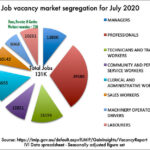
There are far greater vacancies in other industries. Should not these parliamentarians not be focusing on where the greatest needs are? Not that farmer’s needs are illegitimate because they are not. These crops do need to be harvested. But professional job roles like engineers, scientists, Health (particularly now), ICT, Lawyers and the like for which there are at least 39580 jobs advertised or 30% of the job market. Managerial roles have 13800 job vacancies (10.5%); Technical and trade workers have 18194 job vacancies (13.8%); Community and personal services workers have 12821 job vacancies (9.8%); Clerical and Administrative workers have 18655 job vacancies (14.2%). These jobs need an educated population to fill them so a better focus for young people would be – one might presume – to promote policies to make education more universally available to young Australians.
Instead, our political conservatives and Murdoch media are focused on the largest unemployed group in Australia to fill jobs in one of the smallest markets for jobs in the country. Dare I make the pun, that there will be no bonuses for your work ethics as you’re all targeting, the easy pickings of the lowest hanging fruit!
